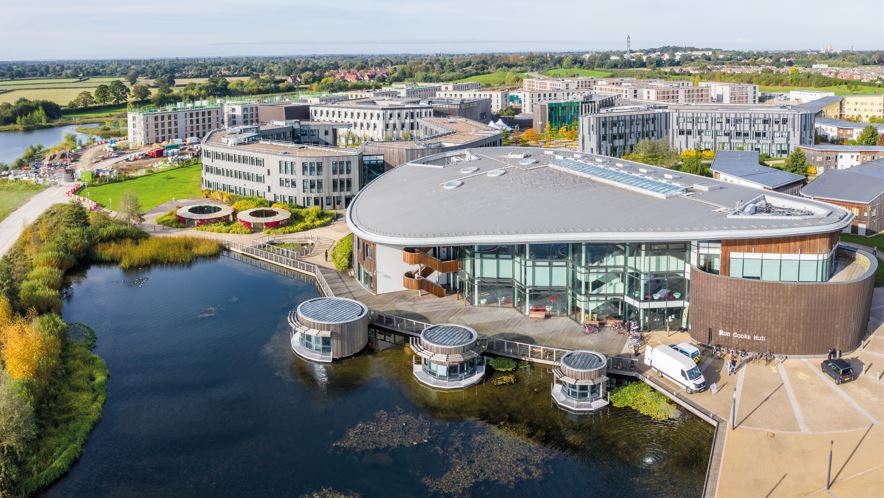
This year’s AUDE Estates Management Report, which covers August 2021 to July 2022, reveals a 29% reduction in capital expenditure across the HE estate to £2.5bn as against £3.5bn immediately before the pandemic.
The report notes: “Academic year 2021/22 is the second year of Covid, and the budgeting period for this year perhaps represents a point of maximum uncertainty, including the potential for continued its disruption. Given the extraordinary and worldwide nature of the threat, affecting everything from staff wellbeing and the logistics of materials supply to the willingness of international students to enter the UK, such a drop off in spend should not be surprising.” It adds: “Inflation has, of course, fed into these calculations. BCIS Inflation indices from Q3 21 to Q3 22 indicate a 9.44% rise in prices over this period.
While some projects have been cancelled, many have been delayed or respecified.” According to AUDE’s research, at least a sixth of AUDE member universities reported RAAC on campus. Overall, the HE estate is in condition A or B. But AUDE sounds a warning note, saying: “There has been a small but concerning increase in the number of buildings in condition C or D. Maintenance spend is never the thing universities are keen to prioritise, certainly not in times of real financial squeeze, and estates and facilities teams are often under pressure to cut maintenance budgets, but failure to maintain buildings in a timely manner will see the condition of the HE estate decline.” The HE estate size increased by 403,000 sqm over the period, from 21,793,000 sqm to 22,196,000 sqm. But rising construction costs and the developments in hybrid or remote working mean many universities are rethinking their expectations around built spaces.
The report asks: “Do we have more space than we need? Are there potential carbon (and cost) savings associated with reducing the estate? The potential for work patterns to swing back towards on-campus working can’t be ignored so decisions with long-term capacity consequences will have to be carefully considered. The impact of the pandemic continues to ripple out and affect the decisions we make, and the question of ‘right-sizing’ is one that AUDE members will be thinking about long into the future.” Another pressure weighing heavily on universities is energy spend, which rose by 43%, from £400m to £574m. The report notes: “Depending on their specific arrangements, universities were more or less affected by this increase in costs . Some have successfully hedged against the worst of it while others have experienced a doubling or more in the amount spent on energy.” While the cost of energy continues to be a major focus, universities are increasingly seeing the carbon reduction challenge as the biggest test they face.
A figure of £40bn has been estimated as the cost of attaining net zero emissions. The first university heading towards its ‘NZC date’ has a target that is now just five years away. The report notes: “The costs involved are frightening. But until we know the likely cost in our own organisations, how can we set about budgeting, securing investment funding or prioritising to focus activity in a way that addresses quick wins and plans for the truly big-ticket items? The scale of the challenge requires a ‘whole university’ as well as a ‘whole sector’ approach. While it may be estates and facilities teams, for instance, that ensure EV charging apparatus is fit for purpose and effective, it is often others who look at organisational travel policies. The same people who lead on capital development are unlikely to be the ones who lead on culture change or on changes to the curriculum or student engagement. The convening power and the impetus for coordination must now come from VCs and Councils/Boards to get everyone acting together effectively.”